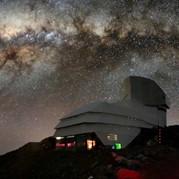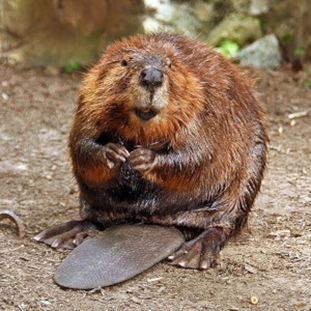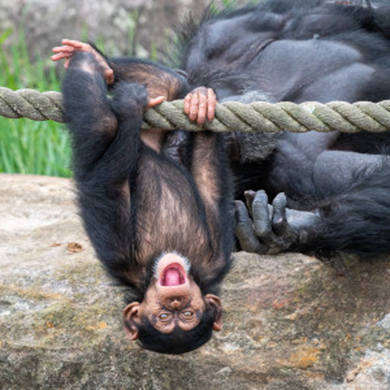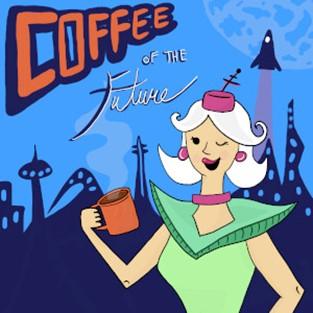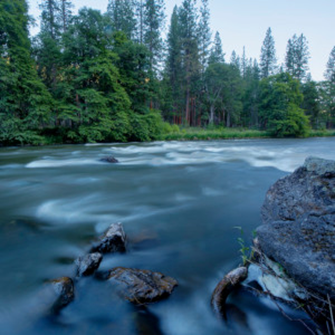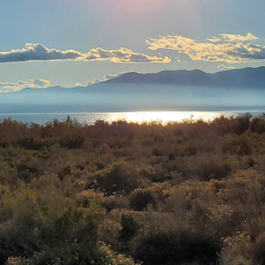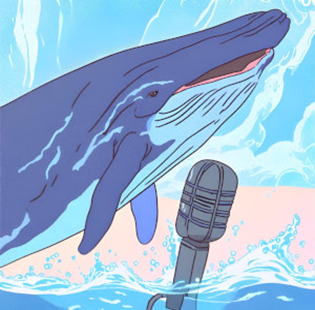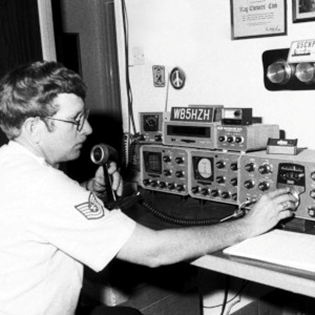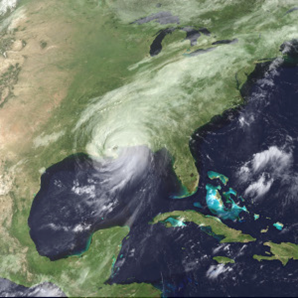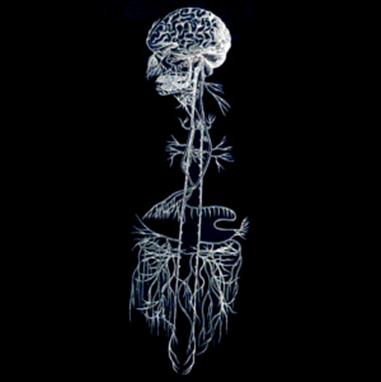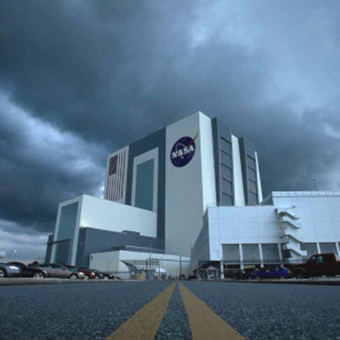Listening to this now. It's delightful. Now I want to see the sledding crow.
#BigPictureScience
Big Picture Science for Aug. 11, 2025: Beyond the Standard Model
REPEAT
Ever heard of a beauty quark? How about a glueball? Physics is full of weird particles that leave many of us scratching our heads. But these tiny particles make up everything in the quantum world and in us and are the basis of the fundamental scientific theory called The Standard Model. But it doesn’t explain everything. It can’t account for dark matter or dark energy, for example. We find out whether new physics experiments might force us to rewrite the Standard Model. Plus, we discuss a NASA proposal to fly spacecraft close to the sun in search of new physics.
Guests:
* Phil Plait – Aka the Bad Astronomer, former astronomer on Hubble, teacher, lecturer and debunker of conspiracy theories. He is also the author of a new book “Under Alien Skies: A Sightseer’s Guide to the Universe.”
* Harry Cliff – Particle physicist at the University of Cambridge who works on the LHCb experiment at the largest particle physics laboratory in the world, CERN. He is the author of: “Space Oddities, The Mysterious Anomalies Challenging Our Understanding of the Universe.”
* Slava Turyshev – Research scientist at NASA’s Jet Propulsion Laboratory.
This repeat podcast originally aired on May 20, 2024
Download podcast at - https://bigpicturescience.org/beyond-the-standard-model
You can listen to this and other episodes at http://bigpicturescience.org/
Get early access to ad-free versions of every episode by joining us on Patreon. Thanks for your support!
Big Picture Science for Aug. 04, 2025: Scoping Out the Universe
Telescopes are like light buckets. The bigger the telescope, the more light collected for astronomers to observe. With recent advances in technology, amateur astronomers can join professionals for a chance to observe stellar nurseries and exoplanets many light-years away. But as our capabilities increase, so do the mysteries, including those around high-energy bursts coming from an otherwise unremarkable part of the universe. Understanding fast radio bursts could turn physics on its head.
From the Vera Rubin Telescope in Chile to the backyard instruments of amateur astronomers, we share what new things we might learn about stars, the Earth, exoplanets, and the potential for life on other worlds.
Guests:
* Clare Higgs – Astronomer working with the public outreach team for the Vera Rubin Observatory
* Franck Marchis – Senior astronomer and director of citizen science at the SETI Institute, chief science officer and co-founder of Unistellar
* Amanda Cook – Postdoctoral fellow at McGill University and member of the CHIME/FRB Collaboration
Download podcast at - https://bigpicturescience.org/episodes/scoping-out-the-universe
You can listen to this and other episodes at http://bigpicturescience.org/
Get early access to ad-free versions of every episode by joining us on Patreon. Thanks for your support!
#Telescopes #Astronomy #BigPictureScience #SETI #News #Podcast #Science
Big Picture Science for July 28, 2025: Leave it to Beavers
They are known for holding branches in their paws and gnawing on them like corn cobs. They build lodges and dams which occasionally flood roads. Cute, comical, and considered pests, beavers were nearly hunted to extinction for their pelts before conservation efforts allowed their populations to rebound. Now environmentalists and engineers are reintroducing North America’s largest rodent to drought-prone habitats across the country. As the paddle-tailed animals’ dam-building has revealed itself to be a potent bulwark against climate change-induced water scarcity, the beaver is being hailed as an ecological hero.
Join us as we stomp through soggy meadows getting to know the OG geoengineers. From their water pressure-sensing tails to their intricate branch-weaving, find out why, as our nation’s wetlands disappear, and new federal policies strip protection for many of those that remain, many think that partnership with a wild species could help build ecological resiliency.
Guests:
* Leila Philip – Journalist and author of “Beaverland: How One Weird Rodent Made America”
* Denise Burchsted – research scientist, and engineer, Keene State College
* Clay Frazer – restoration ecologist with Native Range Ecological
* Michael Waasegiizhig Price – traditional ecological knowledge specialist at the Great Lakes Indian Fish and Wildlife Commission. He is Anishinaabe and a longtime tribal college educator serving at Leech Lake Tribal College and White Earth Tribal and Community College.
Download podcast at - https://bigpicturescience.org/episodes/leave-it-to-beavers
You can listen to this and other episodes at http://bigpicturescience.org/
Get early access to ad-free versions of every episode by joining us on Patreon. Thanks for your support!
Big Picture Science for July 21, 2025: The Play’s the Thing
REPEAT
Has children’s play become too safe? Research suggests that efforts to prioritize safety harms children’s mental and physical development during play and contribute to anxiety. One solution: introduce risk into play. We visit an adventure playground where kids play unsupervised with anything from scraps of metal to hammers and nails. Plus, what are the evolutionary benefits of play? After all, we’re not the only species who like to roughhouse, sled, or chase balls. And, reclaiming play for those who have outgrown recess.
Guests:
* David Toomey - Professor of English, University of Massachusetts. Amherst and author of “Kingdom of Play: What Ball-Bouncing Octopuses, Belly-Flopping Monkeys, and Mud-Sliding Elephants Reveal About Life Itself.”
* Mariana Brussoni - Developmental psychologist who studies children's outdoor risky play, and professor at the University of British Columbia in the Faculty of Medicine
* Yoni Kallai - Interim director, head playworker and co-founder of play:groundNYC
* Peter Gray - Psychology researcher at Boston College and author of "Free to Learn: Why Unleashing the Instinct to Play Will Make Our Children Happier, More Self-Reliant, and Better Students for Life"
This repeat podcast originally aired on May, 13 2024
Download podcast at - https://bigpicturescience.org/episodes/the-plays-the-thing
You can listen to this and other episodes at http://bigpicturescience.org/
Get early access to ad-free versions of every episode by joining us on Patreon. Thanks for your support!
#BigPictureScience #SETI #News #Podcast #Science #Play #Children
Big Picture Science for July 14, 2025: Nuts and Bolts
REPEAT
How frequently do you think about fasteners like screws and bolts? Probably not very often. But some of them a storied history, dating back to Egypt in the 3rd century BC. They aren’t just ancient history. They help hold up our bridges and homes today. Join us as we dissect a handful of engineering inventions that keep our world spinning and intact.
Guests:
* Roma Agrawal - structural engineer and author of "Nuts and Bolts: Seven Small Inventions That Changed the World (in a Big Way)"
* Ron Gordon - watchmaker, New York City
This repeat podcast originally aired on May 6, 2024
Download podcast at - https://bigpicturescience.org/episodes/nuts-and-bolts
You can listen to this and other episodes at http://bigpicturescience.org/
Get early access to ad-free versions of every episode by joining us on Patreon. Thanks for your support!
#BigPictureScience #SETI #News #Podcast #Science #Nuts #Bolts #Screws
Big Picture Science for Jul7 07, 2025: Coffee of the Future
REPEAT
Drinking a cup of coffee is how billions of people wake up every morning. But climate change is threatening this popular beverage. Over 60% of the world’s coffee species are at risk of extinction. Scientists are searching for solutions, including hunting for wild, forgotten coffee species that are more resilient to our shifting climate. Find out how the chemistry of coffee can help us brew coffee alternatives, and how coffee grounds can be part of building a sustainable future.
Guests:
* Christopher Hendon - Assistant Professor of Computational Materials Chemistry, University of Oregon
* Shannon Kilmartin-Lynch - Associate Professor of Civil Engineering, Monash University, Australia
* Aaron Davis - Senior Research Leader of Crops and Global Change, Royal Botanical Gardens, Kew
This repeat podcast originally aired on April 8, 2024
Download podcast at - https://bigpicturescience.org/episodes/coffee-of-the-future
You can listen to this and other episodes at http://bigpicturescience.org/
Get early access to ad-free versions of every episode by joining us on Patreon. Thanks for your support!
Big Picture Science for June 30, 2025: What Moves Us
What physical activity gives you joy? Whether it’s walking, running, dancing or swimming, your body evolved to do it. We are made for movement. But there’s a cost, as anyone with a sore neck or aching back knows. From the tiny muscles in our skin, which raise the hair on our arms, to the intricate mix of bone, blood vessels, and nerves in our neck, natural selection has struck a delicate and sometimes wacky balance between utility and form. In this episode, we explore how parts of the body - our muscles, neck and feet - came to be, and what forces prompted the evolution of efficient yet imperfect bodies.
Guests:
* Kent Dunlap - Professor of biology at Trinity College in Hartford, Connecticut and author of “The Neck: A Natural and Cultural History”
* Bonnie Tsui - Journalist and author of “On Muscle: The Stuff That Moves Us and Why It Matters”
* Jeremy DeSilva - Anthropologist at Dartmouth College and author of “First Steps, How Upright Walking Made Us Human”
Download podcast at - https://bigpicturescience.org/episodes/what-moves-us
You can listen to this and other episodes at http://bigpicturescience.org/
Get early access to ad-free versions of every episode by joining us on Patreon. Thanks for your support!
For people who have grown up with Star Trek in the 70s, the fact that we still haven't made first contact is a bit of a letdown 🚀. While we're waiting, #BigPictureScience is the nex t thing, and this episode about planets, from 2024, is particularly good 🎧 #astronomy #podcast
https://bigpicturescience.org/episodes/inside-planets
Big Picture Science for June 23, 2025: The Rights of Rivers
Healthy rivers and riparian ecosystems are teaming with life, but should rivers themselves be considered alive? The question is central to the growing rights-of-nature movement that claims that ecosystems and entities, like rivers, have legal rights. After Ecuador enshrined the rights of nature in its constitution, lawyers employed the new personhood status to stop mining companies from clearing a section of the Los Cedros River and its surrounding biodiverse cloud forest. Granting rivers moral standing comes as over-damming, pollution, and climate change have put them in crisis globally. Writer Robert Macfarlane explores how seeing rivers as living beings rather than just resources – a change he calls “a great act of moral imagination” – could help save our watersheds and rivers, upon which all life depends.
Guest:
* Robert Macfarlane – Writer and Professor of Literature and Environmental Humanities at the University of Cambridge, and author of “Is a River Alive?”
Download podcast at - https://bigpicturescience.org/episodes/the-rights-of-rivers
You can listen to this and other episodes at http://bigpicturescience.org/
Get early access to ad-free versions of every episode by joining us on Patreon. Thanks for your support!
Big Picture Science for June 16, 2025: Lithium Valley
REPEAT
The discovery of a massive amount of lithium under the Salton Sea could make the U.S. lithium independent. The metal is key for batteries in electric vehicles and solar panels. But the area is also a delicate ecosystem. We go to southern California to hear what hangs in the balance of the ballooning lithium industry, and also how we extract other crucial substances – such as sand, copper and iron– and turn them into semiconductors, circuitry and other products upon which the modern world depends.
Guests:
* Ed Conway – economics and data editor of Sky News and columnist for the Times in London. He’s the author of “Material World, The Six Raw Materials that Shape Modern Civilization“.
* Frank Ruiz – Audubon California Salton Sea Program Director.
* Michael McKibben – Geologist, University of California, Riverside.
This repeat podcast originally aired on February 19, 2024
Download podcast at - https://bigpicturescience.org/episodes/lithium-valley
You can listen to this and other episodes at http://bigpicturescience.org/
Get early access to ad-free versions of every episode by joining us on Patreon. Thanks for your support!
Big Picture Science for June 09, 2025: Alien Says What?
REPEAT
Whales are aliens on Earth; intelligent beings who have skills for complex problem-solving and their own language. Now in what’s being called a breakthrough, scientists have carried on an extended conversation with a humpback whale. They share the story of this remarkable encounter, their evidence that the creature understood them, and how the experiment informs our Search for Extraterrestrial Intelligence. After all, what good is it to make contact with ET if we can’t communicate?
Guests:
* Brenda McCowan – Research behaviorist at the University of California Davis in the School of Veterinary Medicine who studies the ecological aspects of animal behavior and communication.
* Fred Sharpe – whale biologist and behavioral ecologist at Simon Fraser University and member of the Templeton WhaleSETI Team.
* Laurance Doyle – astrophysicist and information theory researcher at the SETI Institute.
This repeat podcast originally aired on February 2, 2024
Download podcast at - https://bigpicturescience.org/episodes/alien-says-what
You can listen to this and other episodes at http://bigpicturescience.org/
Get early access to ad-free versions of every episode by joining us on Patreon. Thanks for your support!
#BigPictureScience #SETI #News #Podcast #Science #Whales #Aliens
Big Picture Science for June 02, 2025: Hurricane Comms
A big challenge during a hurricane or other disaster is keeping lines of communication open when the power goes out. In this episode, the second in our series tied to the 20th anniversary of hurricane Katrina, we report from the National Hurricane Conference in New Orleans about a technology used in 2005, and still employed today, to provide vital information during a crisis.
In our age of growing reliance on cellphones and funding cuts to federal agencies tasked with disaster communications, could ham radio be our last antenna standing during a chaotic catastrophe? “Hams” talk about their ability to keep information flowing during a storm. Meanwhile, a very recent technology, artificial intelligence, is playing a growing role in hurricane preparedness. Emergency responders tell us how they use AI to issue warnings, describe the limits of the technology, and why – and when – humans should step in.
Guests:
* Bobby Graves – Network manager for Hurricane Watch Net amateur radio. His call sign is KB5HAV.
* Julio Ripoll – A coordinator and founder of the National Hurricane Center amateur radio station, WX4NHC in Miami, Florida where he has been a volunteer for 45 years.
* Matt Anderson – Call sign KT5KNZ, volunteer at the Louisiana State Emergency Operations Center for two decades. He was active during hurricane Katrina.
* Todd Devoe – Emergency management coordinator for the city of Inglewood, California.
* Brian Head – Chair of the fire rescue law enforcement and military track for the National Hurricane Conference; executive director with Buffalo Computer Graphics, former employee with the New York State Emergency Management Office.
Download podcast at - https://bigpicturescience.org/episodes/hurricane-comms
You can listen to this and other episodes at http://bigpicturescience.org/
Get early access to ad-free versions of every episode by joining us on Patreon. Thanks for your support!
#BigPictureScience #SETI #News #Podcast #Science #Hurricanes #Communication
Big Picture Science for May 26, 2025: Hurricane Season
In the twenty years since Hurricane Katrina devastated the Gulf Coast, powerful hurricanes such as Sandy, Irma, Maria and Helene have also caused immense property destruction and lead to thousands of deaths. If Katrina taught us anything, it was to be prepared for the unimaginable. But have we learned that lesson?
In this episode, part of a series tied to the 20th anniversary of Katrina, we report from the National Hurricane Conference in New Orleans about what we we’ve learned in the years since. Emergency management teams from the Virgin Islands reflect on the two Category 5 hurricanes that hit within just two weeks of each other in 2017, scientists describe how climate change is reshaping hurricanes and we our new tools for forecasting them. Meanwhile dark clouds are gathering. As we head into hurricane season, the administration proposes to slash funding for agencies that are tasked with helping us prepare and recover from natural disasters, such as NOAA and the National Weather Service.
Guests:
* Yvette Henry – Community Affairs Coordinator at the Department of Human Services in the US Virgin Islands
* Abigail Hendricks – Emergency Support Function #6 coordinator on the island of St John, Virgin Islands
* Meaghan Enright – executive director of the nonprofit, Love City Strong that works on disaster preparedness, response, and recovery on the island of St John, Virgin Islands
* Rebeca Mueller – Director of media coordination, National Hurricane Conference
* Michael Brennan – Director, National Hurricane Center, Miami, Florida
* Julie Roberts – Former director of communications and Deputy Chief of Staff for NOAA during the first Trump administration.
Download podcast at - https://bigpicturescience.org/episodes/hurricane-season
You can listen to this and other episodes at http://bigpicturescience.org/
Get early access to ad-free versions of every episode by joining us on Patreon. Thanks for your support!
Big Picture Science for May 19, 2025: Touching a Nerve
Some call it your sixth sense. You refer to it when you have a “gut feeling.” With a vast fiber network running throughout your body, the vagus nerve knows about and helps regulate every critical function in it, from heart rate to digestion to your immune system. Now bioelectric medicine is tapping into that bodily omniscience by using tiny electrical pulses on the vagus nerve to help treat diseases as diverse as epilepsy, diabetes, stroke, Parkinson’s, and even depression. In the coming months, the FDA is set to make a decision about a vagus nerve stimulation device, which, if approved, could provide first-of-its-kind treatment for an autoimmune disease that affects millions of Americans. We consider the groundbreaking potential of vagus nerve stimulation and ask whether electricity could one day replace medications.
Guest:
Kevin Tracey – Neurosurgeon, president of the Feinstein Institutes for Medical Research at Northwell Health, and author of “The Great Nerve: The New Science of the Vagus Nerve and How to Harness Its Healing Reflexes”
Download podcast at - https://bigpicturescience.org/episodes/touching-a-nerve
You can listen to this and other episodes at http://bigpicturescience.org/
Get early access to ad-free versions of every episode by joining us on Patreon. Thanks for your support!
#BigPictureScience #SETI #News #Podcast #Science #VagusNerve
Big Picture Science for May 12, 2025: NASA Under the Axe
The White House has proposed unprecedented cuts to NASA’s budget - the largest in the agency’s history. If approved, this withdrawal of funding would force the cancellation of many major programs, including the long anticipated Nancy Grace Roman Space Telescope as well as others involved in the search for life in the universe. It would also impact the agency’s ability to do fundamental research. We look at what the loss of NASA programs could mean for the future of space science and exploration. Plus, an intriguing discovery by the James Webb Space Telescope underscores the progress we’ve made - and could lose - when it comes to searching for potential biosignatures in the universe.
Guests:
* Leonard David – Space journalist and author
* Nadia Drake – Freelance science journalist
* Carl Zimmer – New York Times science columnist
Download podcast at - https://bigpicturescience.org/episodes/nasa-under-the-axe
You can listen to this and other episodes at http://bigpicturescience.org/
Get early access to ad-free versions of every episode by joining us on Patreon. Thanks for your support!
Big Picture Science for May 5, 2025: The Wrong Stuff
REPEAT
By one estimate the average American home has 300,000 objects. Yet our ancient ancestors had no more than what they could carry with them. How did we go from being self-sufficient primates to nonstop shoppers? We examine the evolutionary history of stuff through the lens of archeology beginning with the ancestor who first picked up a palm-sized rock and made it into a tool.
Guest:
* Chip Colwell - archeologist and former Curator of Anthropology at the Denver Museum of Nature & Science, editor-in-chief of the digital magazine Sapiens, and author of “So Much Stuff: How Humans Discovered Tools, Invented Meaning, and Made More of Everything.”
This repeat podcast originally aired on February 5, 2024
Download podcast at - https://bigpicturescience.org/episodes/the-wrong-stuff
You can listen to this and other episodes at http://bigpicturescience.org/
Get early access to ad-free versions of every episode by joining us on Patreon. Thanks for your support!
#BigPictureScience #SETI #News #Podcast #Science #Anthropology #Stuff
Big Picture Science for April 28, 2025: Inside Planets
REPEAT
With planets and moons, it’s what’s inside that counts. If we want to understand surface features, like volcanoes, or their history, such as how the planet formed or whether it’s suitable for life, we study their interiors. Astronomer Sabine Stanley takes us on a journey to the centers of Venus, Saturn’s large moon Titan, Jupiter’s moon Io, and of course Earth, to help us understand how they, and the solar system, came to be.
Guest:
* Sabine Stanley - Planetary scientist at Johns Hopkins University and the author of What’s Hidden Inside Planets.
This repeat podcast originally aired on January 22, 2024
Download podcast at - https://bigpicturescience.org/episodes/inside-planets
You can listen to this and other episodes at http://bigpicturescience.org/
Get early access to ad-free versions of every episode by joining us on Patreon. Thanks for your support!
Big Picture Science for April 21, 2025: Tech in Check
REPEAT
Worried that AI will replace you? It may not seem like the Hollywood writers’ strike has anything in common with the Luddite rebellion in England in 1811, but they are surprisingly similar. Today we use the term “Luddite” dismissively to describe a technophobe, but the original Luddites – cloth workers – organized and fought Industrial Revolution automation and the factory bosses who were replacing humans with cotton spinning machines and steam powered looms. Find out what our age of AI can learn from textile workers of 200 years ago about keeping humans in the loop.
Guest:
Brian Merchant - Los Angeles Times tech columnist and author of “Blood in the Machine: The Origins of the Rebellion Against Big Tech”
This repeat podcast originally aired on January 14, 2024
Download podcast at - https://bigpicturescience.org/episodes/tech-in-check
You can listen to this and other episodes at http://bigpicturescience.org/
Get early access to ad-free versions of every episode by joining us on Patreon. Thanks for your support!
#BigPictureScience #SETI #News #Podcast #Science #AI #Tech #Luddite
Big Picture Science for April 14, 2025: Skeptic Check: Cryptids
Bigfoot could get official status if proposed legislation passes making it the state cryptid of California. If nothing else, the effort shows that fascination with cryptids has an outsized footprint on our culture. We look at why mythical creatures continue to capture imaginations - as well as passions - of die-hard believers, despite no evidence for their existence.
An author uncovers the origin of a beloved hoax in the American West and its unexpected ties to a real animal and historical medical breakthrough. But are we looking for creature delights in all the wrong places?
A tally of Earth’s species reveals that far more remain unidentified than are currently known. Newly discovered critters such as the Yeti crab and an organism dubbed the Flying Spaghetti Monster are so strange, it challenges us to separate fauna fact from folktale.
Guests:
* Chris Rogers – Assemblymember, California’s 2nd Assembly District
* Benjamin Radford – Deputy Editor of Skeptical Inquirer Science Magazine, author, and co-host of Squaring the Strange podcast
* Michael Branch – Writer, humorist, and author of On the Trail of the Jackalope: How a Legend Captured the World’s Imagination and Helped Us Cure Cancer
Download podcast at - https://bigpicturescience.org/episodes/skeptic-check-cryptids
You can listen to this and other episodes at http://bigpicturescience.org/
Get early access to ad-free versions of every episode by joining us on Patreon. Thanks for your support!

